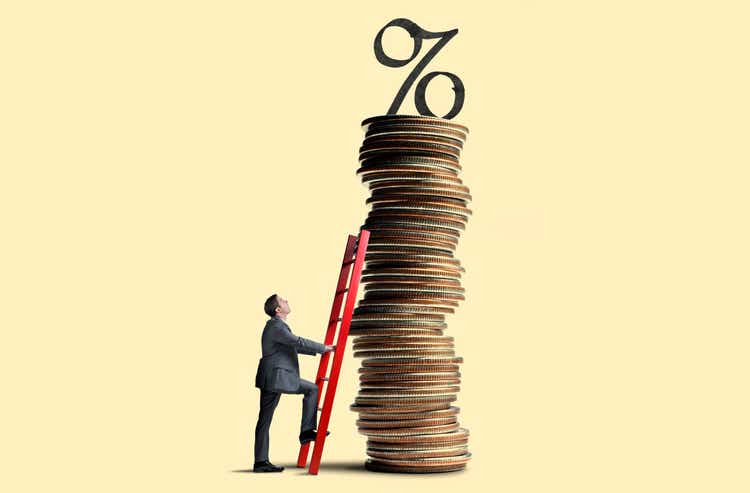DNY59
Old timers remember Paul Volcker’s brutal treatment for spiraling inflation of the 1970’s and early 80’s. His decision to hike interest rates abruptly induced a sharp but short recession. It did the trick. Inflation slowed down and the bond market began a 40 year bull market.
The years following Volcker’s tenure were characterized by increasingly interventionist monetary policy. When the stock market crashed in October 1987, Alan Greenspan’s Fed issued the following statement: “The Federal Reserve, consistent with its responsibilities as the nation’s central bank, affirmed today its readiness to serve as a source of liquidity to support the economic and financial system.” Investors got it. Greenspan had created a put option on the stock market.
Just like that, the Fed single-handedly gave itself a third mandate. Going forward, the Fed would not only control inflation and keep unemployment low, it would also protect the value of assets. Investors cheered.
The Greenspan Put was followed by the Bernanke Put when the Great Moderation, a 20-year period of relatively low macroeconomic volatility, turned into the Great Recession that followed the financial crisis of 2007/2008. Ben Bernanke sought to fix things by once again providing liquidity and thus the first Quantitative Easing (QE1) was born.
QE 1 was quickly followed by several more QEs, all with the stated goal of manufacturing a “wealth effect”. With massive purchases of Treasuries and mortgage-backed securities, the Fed tweaked its policy again. No longer limited to providing liquidity in order to avoid a major crisis, it began to use its power to inflate asset prices and prop up consumption.
In the process, interest rates were kept artificially low. All major Central Banks followed suit, even to the point of pushing the yield on some sovereign debt below zero! Historians will surely have a hard time explaining the rationale for an instrument that is guaranteed to lose value. The argument that the alternative could be even worse strikes one as a strange way to build confidence in the monetary system.
Pumping things up was the easy part. But recent decades notwithstanding, stimulating the economy obviously cannot go on forever. Under Bernanke’s successor, Janet Yellen, the Fed failed to normalize monetary policy. It did not want to take the short-term pain of raising interest rates. Instead, with eyes fixed on the rear-view mirror, a “data driven” Federal Reserve carried on with low interest rates and a hugely bloated balance sheet. That’s when a pandemic brought world trade to a virtual standstill.
By that time, Jerome Powell had inherited a Federal Reserve that was out of ammunition. Or so one would have thought. After all, the Fed’s balance sheet had already ballooned to more than $4 trillion. But even so he doubled down. When all was said and done, the Fed’s balance sheet had exploded to touch $9 trillion, up tenfold since the financial crisis of 2008. Stock prices and real estate prices promptly resumed their uptrend.
Powell, still focusing on the rearview mirror, at first refused to acknowledge the danger. Inflation was dubbed transitory. Until it no longer was.
This short history of recent monetary policy illustrates the mistake markets are making in believing –or hoping– that inflation will soon abate. It will take sustained monetary tightening to reverse forty years of activism.
We have come full circle from Volcker’s day. Fighting inflation is again the stated priority and we have barely begun to control it. In any normal cycle, 4% interest rates would be considered extremely stimulative when headline inflation is above 8%. Let’s hope peak interest rates fall somewhere between these two numbers. It is more likely, one fears, that rates will have to double from here before the Fed is done tightening.
Habits die hard. Investors have gotten used to being bailed out by central banks. However, the new financial reality is that the Fed is finally letting markets play their role of price discovery.
The Powell Put no longer exists. Once market participants are reconciled to the idea that rates are going higher and that the Fed is no longer going to bail them out, we will likely see stock prices reflect companies’ fundamentals again. The past year’s indiscriminate sell-off in the stock market is happening at a time when the contrast between different companies’ fundamentals is becoming more apparent.
The rising tide that lifts all boats has turned. We are either already in a global recession or about to enter one. In hard times, the weak companies will suffer and the strong ones will get stronger. The indiscriminate sell-off of late does not reflect this fundamental law of nature. Picking the winners will yield very good returns as they are very oversold.


Be the first to comment